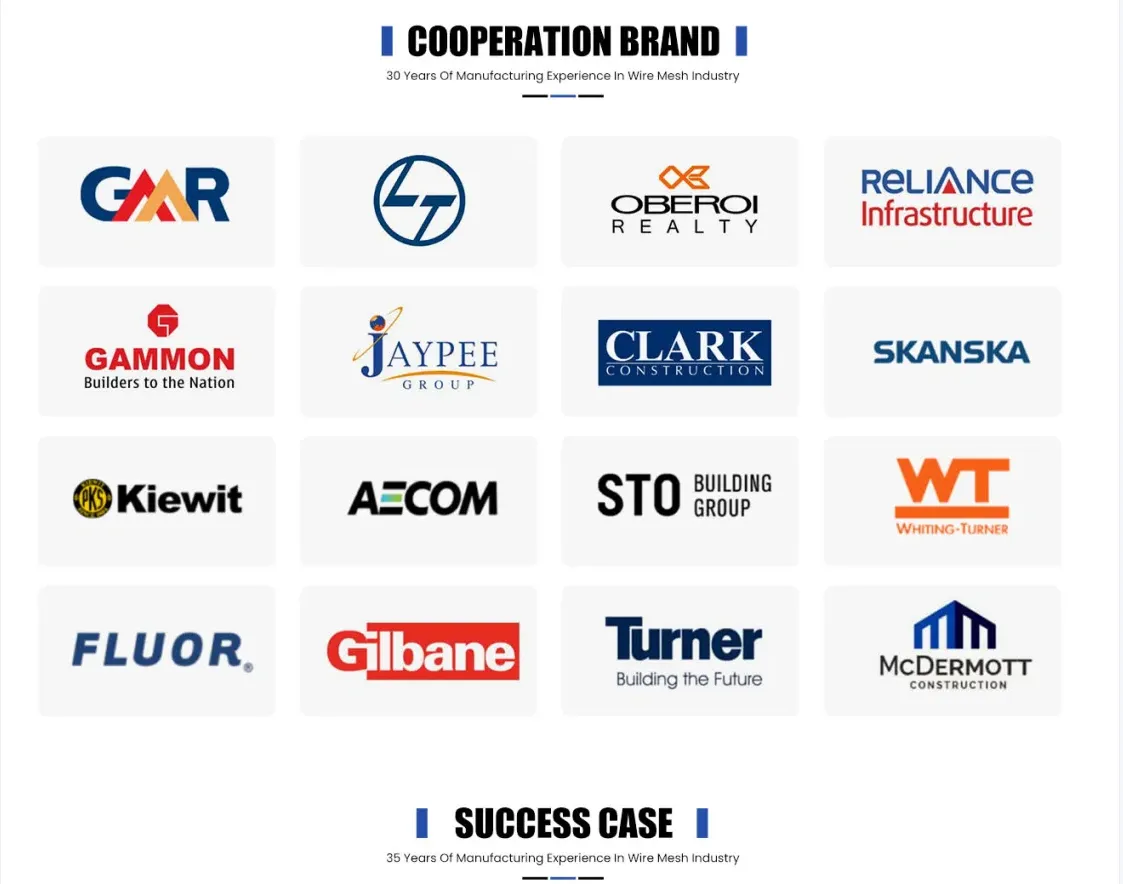Understanding Mesh Expanded Metal Applications and Benefits
Mesh expanded metal, often referred to simply as expanded metal, is a type of sheet metal that has been slit and stretched to form a mesh-like configuration. This unique manufacturing process creates a strong and lightweight material with various applications across multiple industries. In this article, we will explore the properties, benefits, and diverse applications of mesh expanded metal.
What is Mesh Expanded Metal?
The production of mesh expanded metal involves cutting a sheet of metal, typically aluminum, steel, or stainless steel, into a series of slits and then stretching it, which creates an intricate pattern of openings. The result is a mesh material that maintains the inherent strength of the original sheet while offering significant weight savings. The size and shape of the openings can be customized, allowing for flexibility in design and function.
Key Properties
1. Strength-to-Weight Ratio One of the defining characteristics of mesh expanded metal is its excellent strength-to-weight ratio. Despite being lightweight, it can withstand substantial loads and is resistant to deformation.
2. Durability Mesh expanded metal is designed to endure harsh conditions, making it suitable for both indoor and outdoor uses. It is resistant to rust and corrosion, especially when made from stainless steel or coated with protective finishes.
3. Versatility The customizable design of mesh expanded metal means it can be tailored to meet specific requirements. Different materials, thicknesses, and opening patterns can be used to accommodate various applications.
4. Free Flow of Air and Light The mesh structure allows for easy passage of air, light, and sound, making it an ideal choice for applications where ventilation or visibility is essential.
Applications of Mesh Expanded Metal
mesh expanded metal

Mesh expanded metal finds a multitude of applications across various sectors
1. Construction In the construction industry, mesh expanded metal is used in facades, partitions, and reinforcement for concrete structures. Its strength and lightweight nature help to create safe, stable environments.
2. Architecture and Design The aesthetic versatility of mesh expanded metal makes it popular in architectural designs. It can be used for decorative purposes, such as railings, panels, and screens, enhancing both the functionality and appearance of a building.
3. Industrial Many industries use expanded metal for safety grating, walkways, and stair treads. Its slip-resistant properties and strength make it a preferred choice in factories and warehouses where heavy equipment is present.
4. Transportation Mesh expanded metal is commonly employed in the transport sector for applications such as vehicle grilles, coverings, and support structures, providing both functional and safety features.
5. Agriculture In the agricultural sector, it serves in fencing and as protective barriers for livestock. Its durability and strength help in creating secure environments for animals.
6. Arts and Crafts Artists and craftsmen often utilize expanded metal in creative projects due to its unique textures and shapes. It serves as a medium for sculptures, installations, and other forms of artistic expression.
Conclusion
Mesh expanded metal is a remarkably versatile material offering a combination of strength, durability, and aesthetic appeal. Its wide range of applications makes it indispensable in various industries, from construction to transportation. As innovation continues, the potential uses for expanded metal are likely to expand further, ensuring its relevance in the evolving landscape of materials science and engineering. Whether for practical solutions or creative endeavors, mesh expanded metal remains a reliable choice for designers and builders alike.
-
Turn Down the Noise: The Future of Highway Sound Barriers
NewsApr.09,2025
-
Silence the Sound: The Power of Highway Noise Barriers
NewsApr.09,2025
-
Reduce Road Noise Effectively with Highway Noise Barriers
NewsApr.09,2025
-
Noise-Free Living: How Highway Barriers Make a Difference
NewsApr.09,2025
-
Engineered for Silence: Highway Noise Barriers for Every Road
NewsApr.09,2025
-
Effective Noise Control: Highway Barriers for a Quieter Tomorrow
NewsApr.09,2025
Subscribe now!
Stay up to date with the latest on Fry Steeland industry news.

